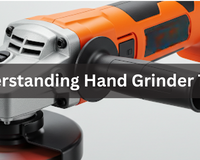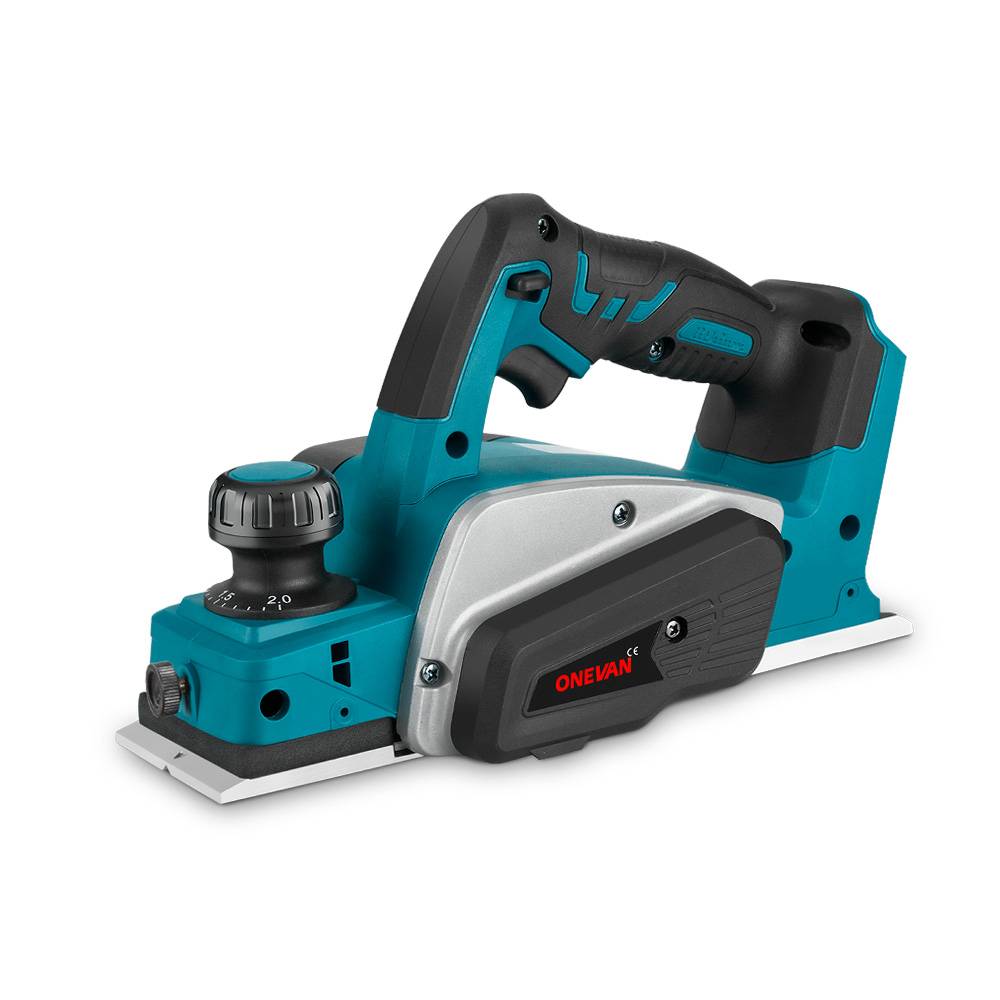You are looking at a sheet of plexiglass and wondering, can I cut plexiglass with a circular saw? The good news is that it can handle it effectively. A circular saw is a solid choice for cutting plexiglass, one of the best tools available for the job. But here's the thing: cutting plexiglass isn't quite the same as just cutting wood. This material works differently, and you've got to know a few specific tricks to get those clean, pro-level cuts. This guide will walk you through how to cut plexiglass with a circular saw.
1. What is Plexiglass?
Plexiglass is a clear plastic material. It is made from acrylic resin. This material is lighter than glass by about half. It also resists impacts much better, around ten times more than glass. Plexiglass stays very clear. It also exhibits good weather resistance, particularly in terms of UV stability and the ability to withstand temperature variations more effectively than many other materials.
So, this is synthetic material. It has a glass transition temperature of approximately 105°C, which means it becomes soft and pliable when heated. Here's why this matters. As your saw blade cuts through the plexiglass, friction builds up heat fast.
When the temperature reaches the 105°C mark, things can be different. The plexiglass starts to soften and can melt at the cut line. You'll end up with melted edges that fuse back together behind your blade - welding your cut shut as you go. The material also expands when it heats up, which can cause your blade to bind and throw off your measurements.
Common Uses of Plexiglass
Plexiglass is used in numerous applications across various industries. Display cases use plexiglass for its clarity and durability. Windows in aircraft and marine vessels rely on its impact resistance. Art projects benefit from their workability and light transmission properties.
Retail environments use plexiglass for protection. They also use it for product displays. Automotive applications include headlight covers. Custom vehicle changes also use it. Plexiglass is also commonly used in home improvement projects, appearing in applications such as greenhouse panels, storm doors, and decorative items.
2. Advantages of Using a Circular Saw for Cutting Plexiglass
1. Efficiency and Speed
Rapid Cutting
A circular saw cuts through plexiglass faster than hand tools or jigsaws. The spinning blade removes material continuously, reducing cutting time for large projects.
Reduced Labor Time
Power tools eliminate the physical effort required for manual cutting methods. This efficiency becomes important when working with thick sheets or multiple pieces.
2. Smooth, Clean Cuts
High Precision
Circular saws equipped with the right blade produce straight, accurate cuts. The stable base plate helps maintain consistent cutting depth and angle.
Less Tearing and Chipping
Proper blade selection minimizes edge damage. The continuous cutting action reduces the risk of chips and cracks that occur with other methods.
3. Versatile Cutting Options
Adjustable Blade Depth
You can adjust the blade depth to match the thickness of your material. This prevents excessive blade exposure and reduces binding.
Angle Cuts
Most circular saws allow for bevel adjustments to make angled cuts. This feature enables complex cuts without the need for additional tools.
4. Portability
Handheld circular saws are versatile and can be used anywhere you need them. This mobility is beneficial when working with large sheets that may be difficult to manoeuvre into a stationary workshop.
Handheld circular saws, such as the ONEVAN 125mm Brushless Cordless Circular Saw, offer portability and convenience. Its lightweight design and comfortable operation.
5. Cost-Effectiveness
Circular saws are less expensive than specialised plastic cutting tools. A quality ONEVAN 180mm 7 Inch Brushless Cordless Circular Saw handles multiple materials, making it a versatile investment for various projects.
6. Ease of Use
Most people can learn to use a circular saw safely with basic instructions and guidance. The straightforward operation makes it accessible for DIY projects and professional work.
7. Ability to Handle Large Sheets
Circular saws cut through full-size plexiglass sheets without difficulty. The power and blade size accommodate thick materials that challenge other cutting methods.
8. Compatibility with Guide Rails
Guide rails ensure perfectly straight cuts over long distances. This accessory transforms a handheld saw into a precision cutting system.
3. The Suitable Circular Saw Blade for Cutting Plexiglass
Blade Type
Carbide-Tipped Blades
With those carbide tips, the blades stay sharper, you know? And that means cleaner cuts when you're working with plastics. Carbide tips resist heat generated when cutting. Carbide maintains its edge at temperatures of 800°C, well above plexiglass' melting point. As a result of this heat resistance, blade dulling is prevented, and blade changes are reduced.
Specialized Acrylic Blades
Purpose-built blades for plastic materials feature specific tooth geometry and cutting angles optimized for thermoplastics. The rake angle (typically 15-20 degrees positive) and clearance angles are designed to shear rather than scrape the material. These blades reduce melting and chipping but cost more than standard blades.
Tooth Count
Low Tooth Count
Fewer teeth create larger gullets between cutting edges. This design helps remove plastic chips and reduces heat buildup. Each tooth removes more material per revolution, which creates larger chips that evacuate more easily. The larger gullets also provide better cooling as air flows through them during cutting process.
Avoid High Tooth Count Blades
Blades with many teeth (60+ teeth) generate excessive heat because each tooth removes less material but creates more friction points. The small gullets trap plastic debris, which melts and re-welds to the blade. This creates a cycle of increasing heat and poor cut quality.
Tooth Design
Alternate Top Bevel (ATB) Teeth
This tooth design creates a shearing action that works well with plastics. The angled cutting edges produce smooth cuts with minimal chipping.
Flat Top Teeth
These teeth are suitable for rough cutting but may cause more chipping. They remove material aggressively but require careful feed rates.
Kerf Width
Thin Kerf Blades
Thinner blades require less power and create less waste. They also generate less heat, which helps prevent melting.
Blade Diameter
Standard Sizes: 7-1/4-inch blades are suitable for most plexiglass cutting tasks. Larger blades cut thicker materials but may generate more heat.
Consider Blade Speed: Lower RPM settings reduce heat generation. Some saws allow for speed adjustment to achieve optimal cutting conditions.

4. Step-by-Step Guide to Cutting Plexiglass with a Circular Saw
Can you cut plexiglass with a circular saw? Below are practical steps.
Step 1: Gather Your Tools and Materials
Tools Needed:
- Circular saw
- Appropriate blade (carbide-tipped or acrylic-specific blade)
- Clamps or a workbench
- Measuring tape
- Straightedge or square
- Pencil or marker
- Safety goggles
- Dust mask or respirator
- Hearing protection (optional)
Materials:
- Plexiglass sheet
- Protective film (optional)
Step 2: Prepare Your Workspace
Clean the Area
You've to clear clear out any debris that could mess with your cut or ding up the plexiglass, right? A clean workspace helps prevent scratches and ensures that your measurements are accurateand precise .
Ventilation
You should also ensure that your space is well-ventilated to disperse plastic dust and fumes. It will disperse plastic dust and fumes. Open windows or use fans to maintain air circulation.
Set Up a Stable Surface
Use sawhorses or a workbench to support the plexiglass. The surface must remain stable during cutting to prevent vibration and binding.
Step 3: Measure and Mark the Plexiglass
Take Accurate Measurements
Double-check all measurements before marking. Use a quality measuring tape to take measurements along the desired cut line and mark the entire length clearly.
Use a Straightedge
Connect your marks with a straightedge to ensure straight-cutting lines. A square helps create perfect right angles for corner cuts.
Step 4: Secure the Plexiglass
All right, so you'll want to clamp the plexiglass down to your work surface, making sure the cut line extends past the edge. This setup prevents the material from shifting during cutting and provides your blade with ample room.
And when you're clamping, make sure those clamps are away from your cut line so they don't get in the way. Also, throw some protective pads under them to avoid scratching the surface.
Step 5: Set Up the Circular Saw
Install the Appropriate Blade
Ensure it's one designed for cutting plastic, or at the very least, a fine-tooth carbide blade. Ensure that the blade is sharp and properly tightened.
Adjust Blade Depth
Set the blade depth to extend about 1/4 inch below the plexiglass thickness. This setting provides efficient cutting while minimizing binding.
Check Saw Functionality
Test the saw operation before starting your cut. Verify that all adjustments are secure and the blade runs true.
Step 6: Make the Cut
Position the Saw
Align the saw blade with your cut line. Use the saw's guide or a straightedge to maintain accuracy.
Start the Saw
Begin cutting with the saw running at full speed. Let the blade reach operating speed before contacting the material.
Cut with Steady Pressure
Apply consistent downward pressure while moving the saw forward. Avoid forcing the cut, as this can cause the blade to bind (get stuck) or lead to poor results.
Step 7: Manage Heat and Friction
Monitor Cutting Speed
Cut at a moderate pace to prevent heat buildup. While a common guideline is to cut at about 3-4 inches per minute for 1/4-inch plexiglass, always refer to the manufacturer's recommendations for optimal cutting speeds. Too fast creates rough cuts and blade deflection; too slow generates excessive heat. Watch for white plastic dust, which indicates proper cutting speed. Melted plastic creates clear, stringy debris, indicating that you need to speed up the cut.
Use Lubrication if Necessary
Apply cutting fluid or soapy water to reduce friction and heat. Specialized plastic cutting fluids are most effective, but a spray bottle filled with soapy water provides adequate cooling for most applications. The lubrication also helps flush away plastic chips that could otherwise melt and stick to the blade.
Step 8: Finishing the Cut
Complete the Cut
Maintain a steady pressure until the blade exits the material completely. Support both pieces to prevent breaking at the end of the cut.
Inspect the Edges
Check the cut quality carefully after the blade has come to a complete stop. Good cuts show smooth edges with minimal chipping or melting.
Step 9: Smooth the Edges
Sanding
so once you've made your cut, you'll want to grab some fine sandpaper to smooth out any rough edges, okay? Start with a 220-grit, then move up to a 400-grit if you want those polished edges. Use light pressure when sanding. Always sand in one direction rather than using circular motions, as this can create scratches that are more visible and detract from the smooth finish.
Remove Protective Film
Peel away any protective film after cutting and finishing. Clean the surface with the appropriate plastic cleaner.
Step 10: Clean Up
Remove Debris
Collect all plastic shavings and dispose of them in accordance with local regulations for waste disposal. Vacuum the work area to remove fine dust.
Store Tools Properly
Clean your tools and store them in a dry location. Proper storage extends tool life and maintains cutting performance.

5. Common Problems Encountered When Cutting Plexiglass with a Circular Saw
1. Chipping and Cracking
Cause: Dull blades, wrong blade type, or excessive cutting speed create chips and cracks along the cut edge.
Support the material properly to prevent flexing during cutting.
2. Melting Edges
Cause: Heat buildup from cutting too slowly or using the wrong blade creates melted, fused edges.
Solution: Slightly adjust the cutting speed based on the material and blade type, and always use blades specifically designed for plastic materials.
3. Burrs and Rough Edges
Cause: Improper blade selection or worn cutting edges create rough, uneven cut surfaces.
Solution: Replace dull blades and choose the appropriate tooth geometry. Sand rough edges with fine abrasives after cutting.
4. Difficulty in Controlling the Cut
Cause: Inadequate material support or improper saw setup makes accurate cutting difficult.
Solution: Use proper clamping and support systems. Consider guide rails or cutting guides for improved accuracy.
5. Blade Binding
Cause: Incorrect blade depth, cutting too fast, or material movement causes the blade to bind in the cut.
Solution: Adjust blade depth properly and maintain steady cutting speed. Ensure material remains secure throughout the cut.
6. Dust and Debris Accumulation
Cause: Plastic cutting generates fine dust that can clog saw components and create health hazards.
Solution: Work in ventilated areas and use dust collection systems when possible. Wear appropriate respiratory protection.
7. Inaccurate Measurements
Cause: Poor measuring techniques or measurement errors result in incorrectly sized pieces.
Solution: Double-check all measurements and use quality measuring tools. Mark cut lines clearly and verify before cutting.
6. Conclusion
So, if you get the hang of cutting plexiglass with a circular saw, that's going to open up a ton of project possibilities for you, seriously. It is crucial to remember that achieving professional results depends on three key factors: using the right blade, employing correct techniques, and adhering to proper safety measures.
Can you use a regular circular saw to cut plexiglass? It is very convenient. For example, you can do this with the right blade and technique. The focal point is to understand the material characteristics and follow proper procedures. Heat management, blade selection, and cutting speed all contribute to successful results.
7. FAQs
Can I cut plexiglass with a regular wood-cutting blade?
You can, but honestly, you probably shouldn't. Those wood blades have too many teeth, which means more friction and heat, leaving you with melted, messy edges. Just grab a carbide-tipped blade with fewer teeth; your cuts will be significantly cleaner.
How can I prevent plexiglass from melting when cutting it?
You want to keep things cool by cutting at a steady, moderate pace, neither too fast nor too slow. If you're seeing clear, stringy shavings, you're moving too slowly and building up heat. White dust indicates you're right in the sweet spot; alternatively, try a spray bottle with soapy water for thicker substances.
How can I ensure straight cuts when using a circular saw?
To get those straight cuts, just use a straightedge or a cutting guide clamped down to your plexiglass. Most circular saws even have a guide fence you can use along the edge. For really long cuts, you might want to look into a track saw guide – it's like a built-in ruler for your saw, you know?
What thickness of plexiglass can I cut with a circular saw?
Most standard circular saws can effectively handle plexiglass up to about 1 inch thick, but for thicknesses beyond this, slower speeds and possibly multiple passes may be necessary. If it's a thick substance, over 3 inches, you might want to consider alternative cutting methods altogether.
How can I minimize dust when cutting plexiglass?
Try to work outside if you can, or at least get a fan blowing the dust away from you, okay? Using a shop vacuum positioned near the cut line can effectively minimize dust during the cutting process. Always, always wear a dust mask – you don't want to be breathing in that plastic dust.
Can I cut plexiglass without a circular saw?
You totally can. You could use a jigsaw with a fine blade, a table saw, or even just score and snap thinner sheets with a scoring tool. A circular saw is one of the fastest and cleanest options for cutting plexiglass.









